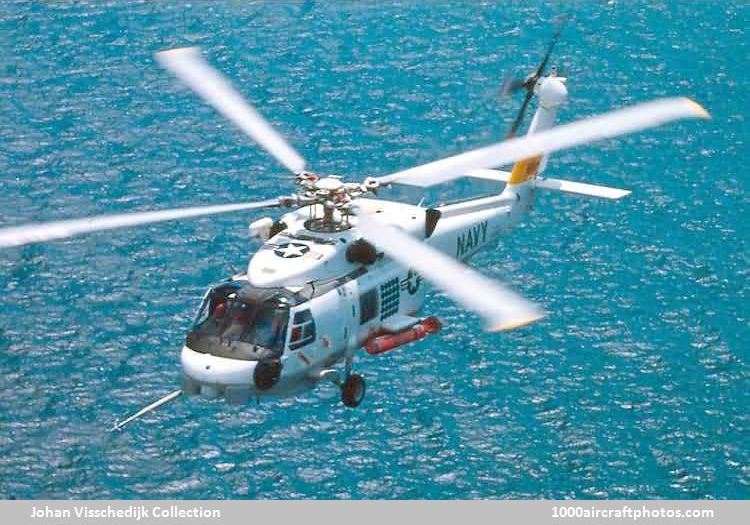06/30/2012. Remarks by Johan Visschedijk: "The S-70L, since designated SH-60B Sea Hawk, was Sikorsky's submission for the USN's LAMPS (Light Airborne Multi-Purpose System) Mk.III competition, and was selected as the winner in September 1977 in preference to Boeing Vertol's Model 237. Detail design of the Sea Hawk was initiated by a USN award to Sikorsky of an engineering contract. At the same time, General Electric was given a contract for further development of the T700 advanced turboshaft engine to provide increased power and improved corrosion resistance, while a contract went to IBM Federal Systems to continue development of the avionics essential for the SH-60B to fulfill the LAMPS Mk.III role.
On 28 February 1978, it was announced that the US Department of Defense had authorized full-scale development of the SH-60B, and had awarded Sikorsky a contract for the development, manufacture and flight testing of five prototypes, plus a further airframe for ground testing.
Earlier, Sikorsky had updated the original UH-60A Black Hawk mockup to SH-60B configuration, and this was formally reviewed just prior to announcement of the contract award. In July and August 1978, this mockup was used for shipboard compatibility trials on board the frigate USS Oliver Hazard Perry (FFG-7) and the Spruance class destroyer USS Arthur W. Radford (DD-968).
In February 1979, the main transmission of the SH -60B completed qualification testing, during which it was run at up to 3,600 shp. This was 600 shp in excess of the Navy's mission performance specification. On March 29, 1979 it was announced that final assembly of the first Sea Hawk prototype (BuNo. 161169, pictured above) had begun, and the first flight was made on December 12, 1979. The remaining four prototypes were flown on February 11, March 17, April 26 and July 14, 1980.
The USN indicated a requirement for 204 of these helicopters for deployment on board Spruance class ASW destroyers, Aegis-equipped guided missile destroyers, and guided missile frigates in the class of the FFG-7 USS Oliver Hazard Perry. In addition to the LAMPS Mk.III primary missions of anti-submarine warfare (ASW) and anti-ship surveillance and targeting (ASST), the Sea Hawk was required also to perform secondary missions which include search and rescue (SAR), medical evacuation (Medevac) and vertical replenishment (Vertrep).
Generally similar to the UH-60A Black Hawk, the Sea Hawk differed in the modifications necessary for shipboard compatibility and in the provision of avionics and equipment suitable for the naval mission. The former included a rotor brake, automatic blade folding, folding tail plane and tail rotor pylon, a simplified short-wheel base landing gear, sliding cabin door, and the introduction of recovery assist, secure and traversing (RAST) equipment for rapid haul-down of the helicopter on to a small deck in rough sea conditions (pictured here aboard USS McInerney, 1980), hovering in-flight refueling capability, and buoyancy features.
Modifications necessary for the mission requirement include the provision of a sensor operator's station, rescue hoist, chin-mounted pods for ESM equipment, pylons for two Mk.46 torpedoes or auxiliary fuel tanks, a pylon on the starboard side to carry MAD equipment, a sonobuoy launcher on the port side, an increased capacity fuel system, and deletion of armor for the pilot's and co-pilot's seats."
